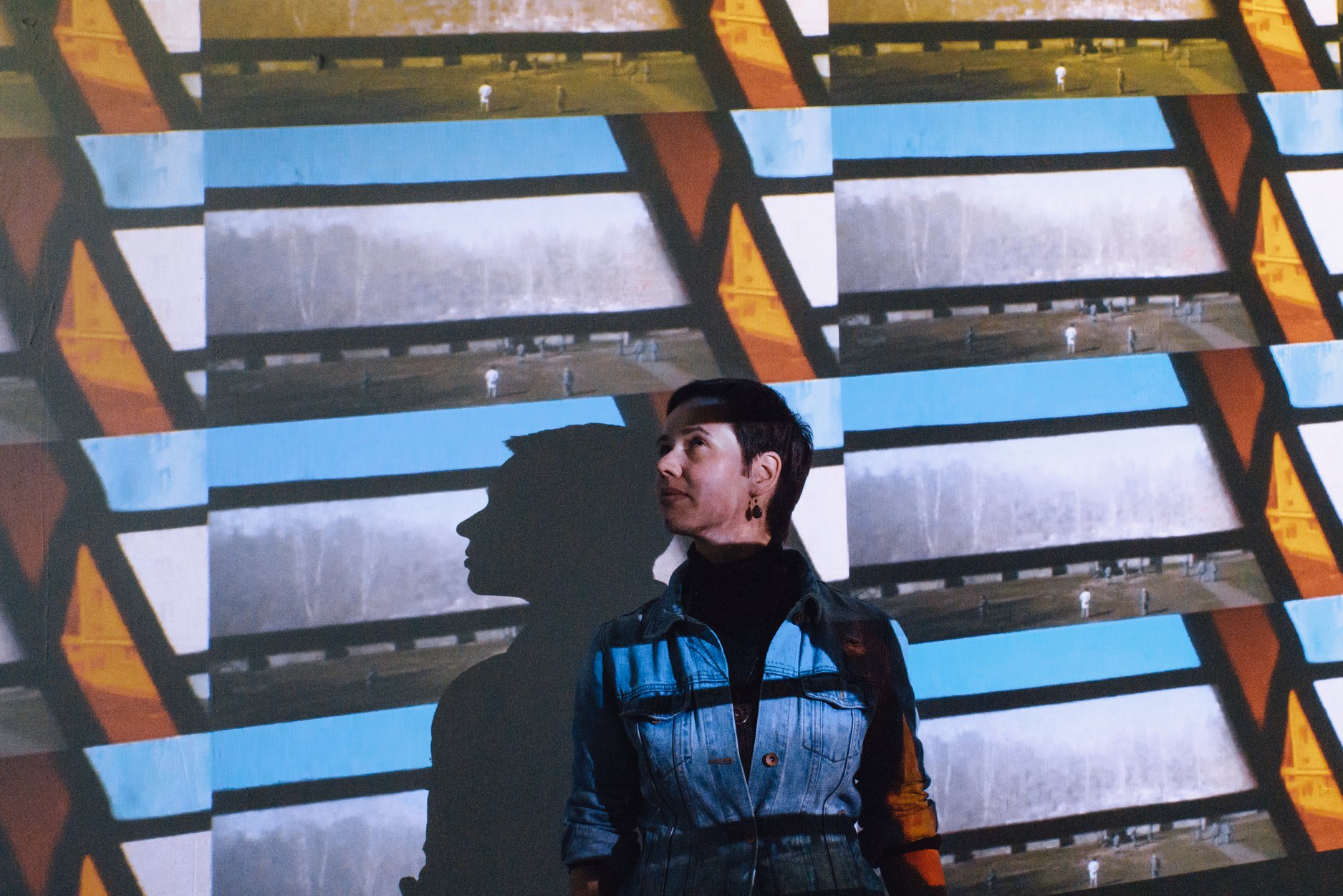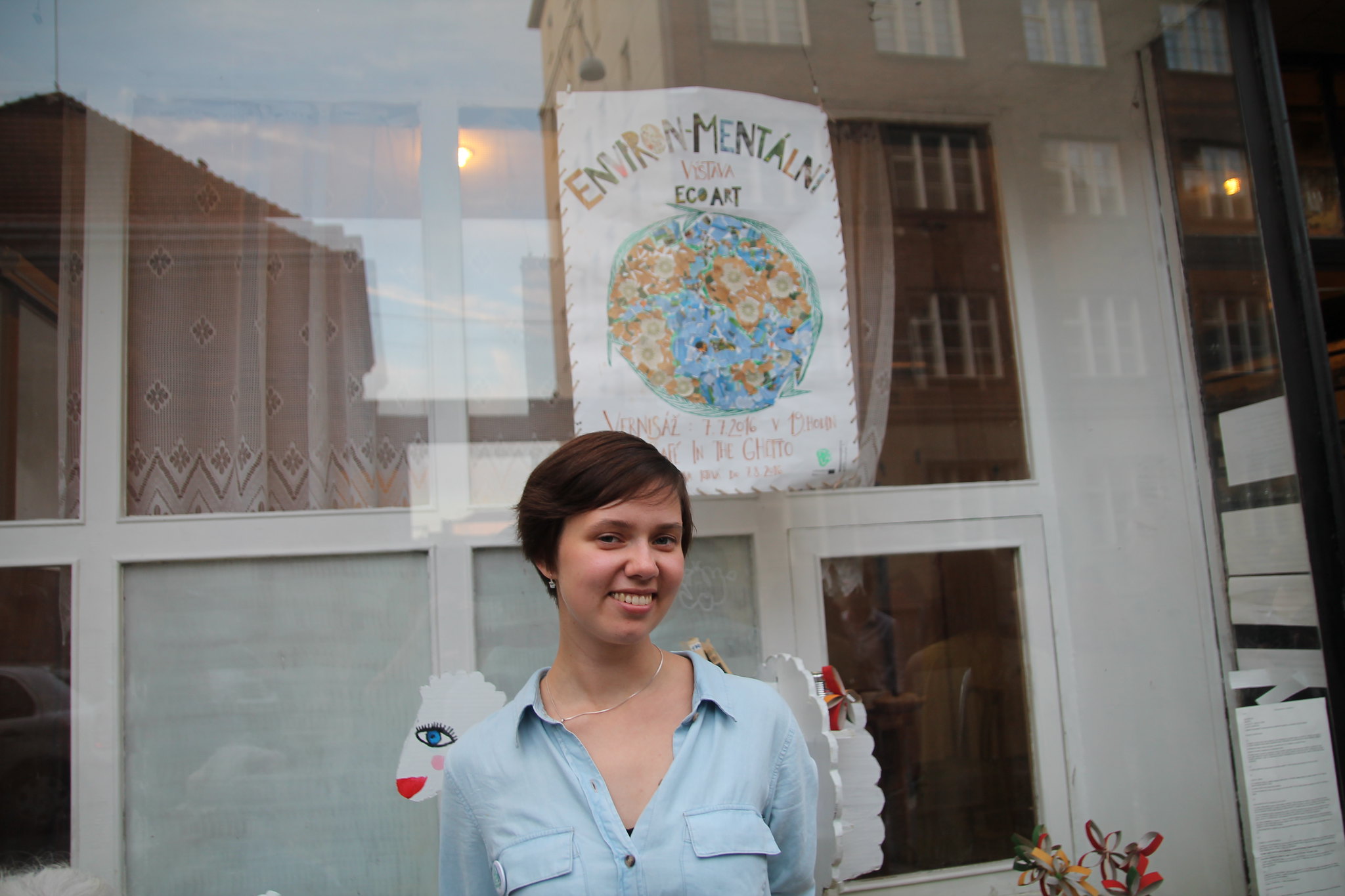Maria Gulina: art management from eco-art to socially engaged practice
- 02.07.2024
- 1822

While the climate change becomes more severe, environmental artworks production has been increasing. We need to describe and critically discuss new artworks and new approaches as the climate crisis requires deep cultural transformations. In this issue of our international activists series we focus on Maria Gulina and her journey from local environmental workshops to art management and working with socially engaged photography in an international gallery.
Maria became an environmental activist in 2011, when she spent a week on a training course for young people. It was dedicated to environmentally friendly lifestyle, deep ecology, advocating nature protection and promoting the human right to have a healthy environment. What impressed her most was the fact that people organising the course and participating in it were speaking openly and confidently about their values – and she saw that they were living according to them in practice. Maria had just graduated from medical university. The educational process there was still in many aspects drawing on soviet traditions: hierarchical, bureaucratic and in many ways hypocritical – exactly in the difference between the declared values and their practical realisation. That was the tipping point for the young activist, and she worked in environmental NGOs for several years after that. They made educational projects, protected urban trees and fought against the destruction of rivers. It soon turned out that art was one of the best ways to tell all of those stories and engage people.
Local agenda: art and creativity to save urban trees
Belarus has its share of environmental problems that require public awareness. Maria shares her favourite example when art was a perfect medium to raise public awareness on the topic: Urban Forester campaign.
Urban Forester project began in Minsk as an initiative of an artist Igor Korzun, who walked around the city and was interested in urban legends and how citizens can save their city. Then other activists joined him: they planted trees, assessed the ecosystem services of trees in the city, talked with botanists and city administration. But the heart of the project still remained the walking excursions, which turned into real urban adventures: a hike along the entire Slepyanskaya water system with its waterfalls, studying the century-old trees of Minsk, and a traditional once-a-year marathon, which includes 42 kilometers through parks, secret courtyards and green areas of the city. On foot, for the whole day, in any weather. A dedicated map, a visual artwork, was created for the project to make it participatory: now everyone could walk the marathon in their own time.
Maria, who was the creative producer of the project, comments that Urban Forester art map connects visual art with the embodied experience of the urban lived environment. The main discovery that awaits those who decide to take part in the art project: even if there are no preserved medieval castles in the city, thoughtful landscape architecture like the water-green diameter of Minsk can be no less an attraction.
The project had an unexpected continuation: creating an inclusive eco-art-trail for visually impaired people in Minsk Botanical Garden. The Botanical Garden is like a theatre for city dwellers. People don't visit it every day, going there is a special occasion, because the plants there are not always growing on city streets. Tactile art works along the trail allow the visitors to experience this space from a different perspective and contribute to the inclusive urban design.

Going international: power of collaboration
Exchanging experience with your colleagues from other countries is crucial in developing new ideas, says Maria. She managed two international eco-art trainings for young activists in Czech republic. For this project she drew on her own experience in volunteering with Hnuti Brontosaurus, an organisation dedicated to protecting natural and cultural heritage through art and volunteering. Together with young people from Czech Republic, Belarus, Greece, Moldova, Romania and Georgia they explored local artists working with environmental topics, shared successful projects from their own countries, dived into deep ecology and created their own visual eco-art works. The project resulted in a pop-up exhibition in one of Brno’s creative art spaces.
Another example was an art festival and exhibition CONTEXT on Lake Baikal, organised by the German organisation Dekabristen. Belarusian organisation Bahna was one of the partners of the project, and Maria participated as an art manager. The purpose of the exhibition and the residence was to create an open field of mutational practices and hybrid interaction without such dichotomies as spectator/artist, people/authorities. Artists and visitors talked about personal/political using feminist discourses, adapting queer ecology to everyday practices, removing the dichotomies of us/them, nature/culture, subject/object, living/non-living, human/non-human. This allowed to strengthen and increase the intentions of solidarity and tolerance with the help of the new ecology of sensuality. Maria describes this project as a perfect example of site specific visual art, bringing pressing environmental problems in the spotlight. Later, a similar international site specific art exhibition KONTAKT took place in Belavezha forest, the most ancient wood in Belarus (and the whole of Europe).

Socially engaged art as a new challenge
In 2021 Maria moved to the UK to pursue a Master’s degree in Media and Culture Studies. Her dissertation was dedicated to the strategies of contemporary art in working with the topic of the climate crisis. The gap in the intellectual understanding of the climate crisis and embracing the new values and behavioural change can be – at least partly – filled by art that speaks to both rational and emotional sides. This doesn’t mean that the role of art is only in communicating information and changing behaviour. Art is not strictly instrumental, but it contributes to creating a view on a particular issue in society.
Understanding climate change is often framed by superficial, shallow ecology – a set of rules for everyday habits and technological innovation. Art suggests the deep ecology view, in which all the organisms are connected by intrinsic relations and where humans have deep respect for all ways and forms of life. This refers to landscapes, cultures and ecosystems as well, and helps us foster meaningful emotional relationships with elements of nature.
Since 2022 Maria has been working in Liverpool’s Open Eye Gallery, continuing her engagement with environmental topics. She shares the gallery’s bold experimental project Climate Lab as an example:
– LOOK Climate Lab 2024 is a six-week-long exploratory project, where researchers, artists, and academics take over the Open Eye Gallery, showing work in progress and talking through ideas to tackle climate change. It showcases how photography can communicate the climate emergency in accessible ways, transcending languages, borders and cultures. Some effects of climate change are already irreversible. We’ve already lost certain species, landscapes, soundscapes, ecosystems, and there’s no way to bring them back. Still, we’re not giving up. That’s what impressed me so much during the LOOK Climate Lab: I saw how many initiatives are still happening, despite the desperation – from wildflowers in the city to regenerative farming. I saw how deeply the artists are rethinking their relationships with other-than-humans. I saw how grateful people were to have this space – a gallery space to grieve what we’ve already lost, and to be angry, and to still care for nature, just because that’s what’s meaningful to us.
Open Eye Gallery takes a lead on socially engaged art, which means activities or projects where photographers and communities/ individuals come together to co-author or co-produce visual representations of the world around us. The process behind the work produced is often as important as the final photographic work, and projects are often reliant on collaboration and discussion. The work often reflects multiple voices about a particular social, political, economical or environmental issue, rather than that of a single artistic voice.
This mode was not new for her, Maria acknowledges, although she didn’t know this specific term. Together with her colleagues and local residents she had previously done an exploratory socially engaged photography project in a small village Lyntupy, dedicated to unique local nature and history, and later another one, dedicated to Palesse region and river Prypyat. Urban Forester was a socially engaged project at its heart. Now, working consciously in this mode, she admits that collective work has unparalleled power for social change.
– It is art that shows us the interconnectedness of humans and other-than-humans. Through art we can become sensitive to the organisms, ecosystems and connections disappearing with the climate transformation. Through art we reflect upon the care these connections need from us. We can create meaningful relationships with distant and un-familiar others – ecosystems and landscapes, humans and non-humans. Art helps expand our care for this world a bit further.
Text: Maryia Parkhimchyk
Maryia Parkhimchyk is a creative producer, editor and art reviewer working with contemporary Belarusian art projects. She is a culture editor of 34mag and DasHip, specialising in queer art and eco art in the context of Belarus, co-creator of an audiodocumentary project on the Belarusian artists in exile and a creative producer of “Let’s Try This” podcast, discussing the issues of art festivals, craftivism and art activism.